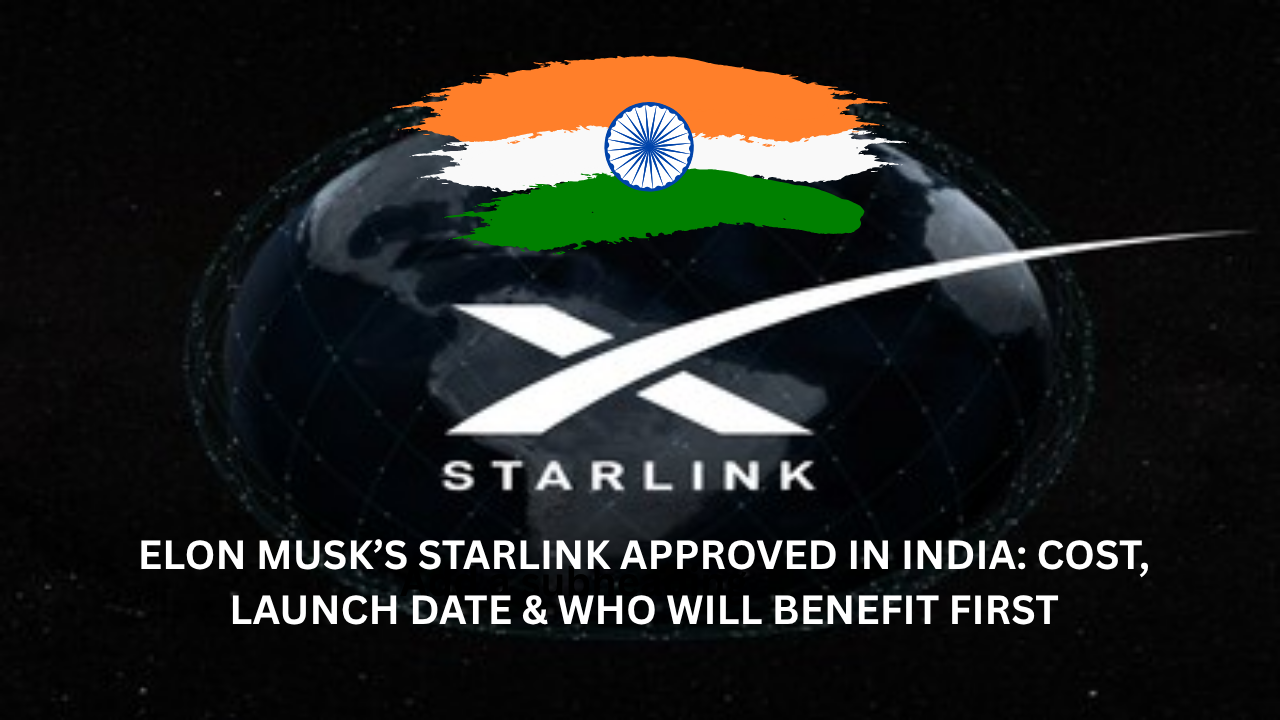Elon Musk is once again making headlines in India. After the recent launch of Tesla’s Model Y, the billionaire entrepreneur is now preparing to roll out Starlink, his satellite internet service, in the country. Starlink aims to bring high-speed internet to remote and underserved areas a major step forward in India’s digital connectivity.
Here’s a detailed look at what’s happening, what it means for Indian consumers, and what lies ahead.
Starlink Gets Regulatory Green Light in India
After months of discussions and delays, Starlink has finally secured a Unified License from India’s Department of Telecommunications (DoT) under the Global Mobile Personal Communication by Satellite (GMPCS) framework. This allows SpaceX to offer satellite-based broadband internet services across the country.
The DoT confirmed that all necessary regulatory clearances, including spectrum framework and licensing requirements, are now in place. India’s space regulator IN-SPACe also issued a commercial license to Starlink, clearing the path for operations over the next five years.
You can check official updates on
dot.gov.in and www.inspace.gov.in
Starlink Service Details: Speed, Price, and Availability
According to early reports, Starlink will launch its services in India with the following plans:
- Installation Kit (Dish + Router): Around ₹33,000
- Monthly Subscription: ₹3,000/month for unlimited internet
- Speeds: Between 25 Mbps and 220 Mbps, depending on location and satellite coverage
While the pricing may seem steep, it’s targeted mainly at rural and remote regions where traditional broadband or mobile data services are either unreliable or unavailable.
There are also discussions about introducing social-sector promotional pricing that could bring monthly costs down to around ₹850 for eligible users.
Government-Imposed Cap on Users
To manage competition and technical capacity, the Indian government has placed a cap on Starlink’s user base. For now, only 2 million (20 lakh) subscribers will be allowed across the country during the initial rollout phase.
This decision was made to balance the interests of existing telecom players like Jio and Airtel, who have expressed concerns about a foreign satellite internet service gaining too much market share too quickly.
Partnerships with Indian Telecom Giants
Starlink is taking a strategic route by partnering with Reliance Jio and Bharti Airtel, India’s two largest telecom operators. These partnerships will enable Starlink to use their retail networks, distribution channels, and technical infrastructure for easier deployment.
This also helps Starlink avoid building its own supply chain from scratch in India — a smart move, considering the scale of the country and logistical challenges.
When Is the Launch Expected?
Sources suggest that Starlink could begin accepting pre-orders within the next 2–3 months. Installations and deliveries of satellite kits are expected to begin by the end of 2025, pending spectrum allocation.
The next crucial step is the assignment of satellite spectrum, which will allow Starlink to activate its Indian coverage zones. The rollout will prioritize rural areas, border zones, tribal belts, and islands where traditional connectivity remains a challenge.
Technical and Policy Compliance
To meet Indian legal standards, Starlink has made several key assurances:
- NavIC Integration: Starlink will integrate India’s own regional navigation system, NavIC, into its technology for accurate geolocation and positioning.
- Data Localization: All user data will be routed within India to comply with national data protection rules.
- Ownership Transparency: SpaceX submitted affidavits to clarify its corporate structure to Indian authorities, easing earlier concerns about foreign ownership and control.
- Cybersecurity Standards: The company has agreed to follow Indian cybersecurity frameworks to ensure the safety and privacy of users.
These commitments were essential to receive licenses and regulatory approvals after the government earlier raised objections related to control, data, and surveillance protocols.
Why It Matters
India has long struggled with last-mile connectivity — especially in rural and remote regions. While fiber networks and mobile towers have rapidly expanded in cities, many villages and hilly regions remain poorly served. Starlink could change that.
Here’s what the launch means for different stakeholders:
| Stakeholder | Impact |
|---|---|
| Rural users | Reliable high-speed internet for education, healthcare, and e-commerce |
| Students & schools | Enhanced access to online learning in tribal or border areas |
| Small businesses | Wider access to digital tools and online marketplaces |
| Telcos | Competitive pressure, but also infrastructure partnerships |
| Government | Boost to the Digital India initiative and broadband penetration goals |
What’s Next for Musk in India?
Elon Musk’s attention to India appears to be growing. Just weeks before the Starlink developments, Tesla officially launched its Model Y in Mumbai, with prices ranging from ₹60 lakh to ₹68 lakh. The company is also considering building a manufacturing facility in India within the next two years.
Now, with both Tesla and Starlink entering the Indian market, Musk is positioning his companies as major players in India’s future from transportation to digital connectivity.
Nand Kishor is a content writer covering business, economy, and world affairs. With a background in journalism, he focuses on clear, ethical, and insightful reporting. Outside of work, he enjoys chess, cricket, and writing short stories.
